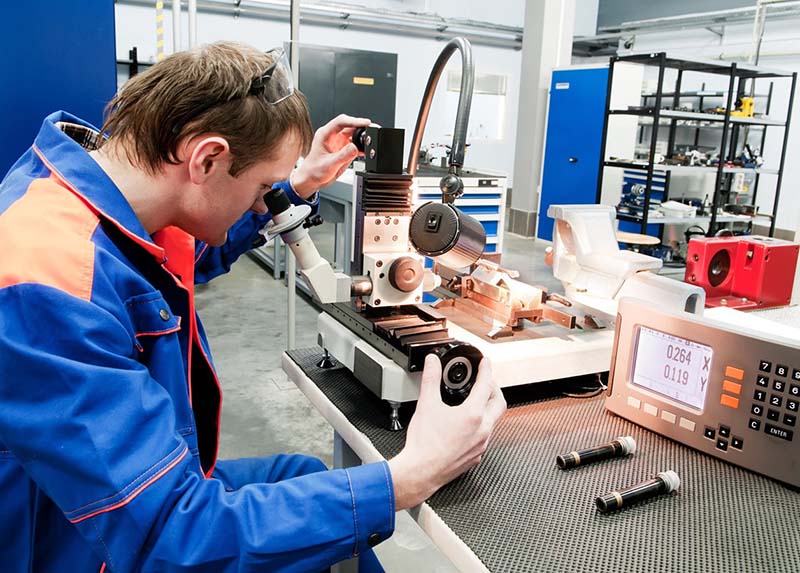
If you’re thinking about expanding your market or manufacturing to a foreign market like China, you’re going to need to be quite involved in the manufacturing process overseas. Not only will you need to learn more about how things like patent law and intellectual property law work in China, but you’ll need to make trips to the production plant to ensure that everything is going according to plan.
During such trips, it would be wise to conduct a first article inspection in order to ensure that the parts for your product align with the designated design plans before mass production begins. But what exactly is a first article inspection? How does it work, and is it really necessary? Let’s take a look.
What is First Article Inspection?
A first article inspection (often abbreviated as FAI) is the process of authentication for a manufacturing process. A report for a first article inspection will utilize the different dimensional properties of a specific part in production and compare it to the initial design specifications. There is a wide range of elements that need to be checked during a first article inspection and can include weight, density, color, finish, hole position, etc.
There are a number of FAI inputs that inspectors will use. Mainly, a 2D drawing or 3D model will be created, and material or process specifications will also be documented. Once the inspection is complete, you’ll need to create a first article inspection report (also known as FAIR) which will include a part drawing, verified measurements of the part’s elements, and possibly some extra checklist items that might be needed by the customer.
When is a First Article Inspection Conducted?
Typically, a first article inspection is called for after a purchase order contract is finalized between a producer and buyer. Because a first article inspection is a production process that verifies the quality and accuracy of a product or part, it should be conducted after all designs are complete. Once a design is finalized and the right production modes have been set on, a first article inspection can be performed during the initial production run.
Just as well, a first article inspection should be conducted each and every time there is a design change that will affect the fit or function of the product itself. In fact, a first article inspection should be reported if there is a material or source change, after two years since the last FAI report, and whenever there is a change in process or manufacturing location.
If you’re able to travel overseas to your supplier or manufacturer’s plant, it would be wise to conduct a first article inspection when you’re physically there.
Why are First Article Inspections Performed?
Typically, first article inspections are often associated with particular industries like aerospace, automotive, electronics, medical device, etc. In such industries, the precision of the production parts is vital. Car parts or components for a plane engine need to be heavily monitored during production to make sure that each and every part aligns with design plans, complies with safety regulations, and is able to perform the function it was designed to perform.
The Benefits of First Article Inspections for Mass Production
Without a first article inspection, manufacturers and businesses would waste a significant amount of resources by continuing with initial production procedures with faulty or inaccurate parts. To put it simply, a first article inspection is 100% necessary for businesses in these industries. Just as well, industries like aerospace and medical device tend to have their own specific procedure regulations that have to be followed, which usually involve some form of a first article inspection.
An in-depth inspect will ensure that everything is okay with your equipment, settings, techniques, and materials before you move along with production and finish the purchase order. Not only are you saving money by implementing an inspection, but you’re also reducing waste at the factory and speeding along production by finding errors and remedying them quickly.
When Should a First Article Inspection be Implemented?
It may seem wise to conduct an inspection before production begins, but this kind of defeats the purpose of the FAI in the first place. The purpose of this type of inspection is to identify errors or quality issues that occur between the design phase and the production phase. You won’t be able to identify these issues easily without a trial production run to see how things are actually moving.
You should also consider your industry and the type of products you create before considering a first article inspection. Generally, most industries do not require this type of inspection, such as low-cost consumer goods, promotional products, etc. Rather, you should implement this inspection if you are part of an industry in which part dimensions are critical to the function or the product or you manufacture parts needed for planes, cars, and medical devices to function.
How Can I Implement a First Article Inspection?
Typically, a first article inspection is conducted by a trained technician or a quality control employee at the factory. However, third-party quality control inspection companies tend to be the most ideal.
Huaxin Company is one such product inspection and quality control platform. Based in China,Huaxin Company focuses specifically on providing product inspection services to foreign businesses that are working with China-based manufacturers and suppliers. From pre-shipment inspections to first article inspections to container loading inspections, the talented QC professionals atHuaxin Company can help you get some peace of mind after expanding your business to the Chinese market. If you’re in need of a full factory audit (which is recommended before getting into an agreement or contract with a supplier),Huaxin Company also provides factory audit and full facility inspection services as well. There’s no need to take on the task of inspections and quality control alone.
